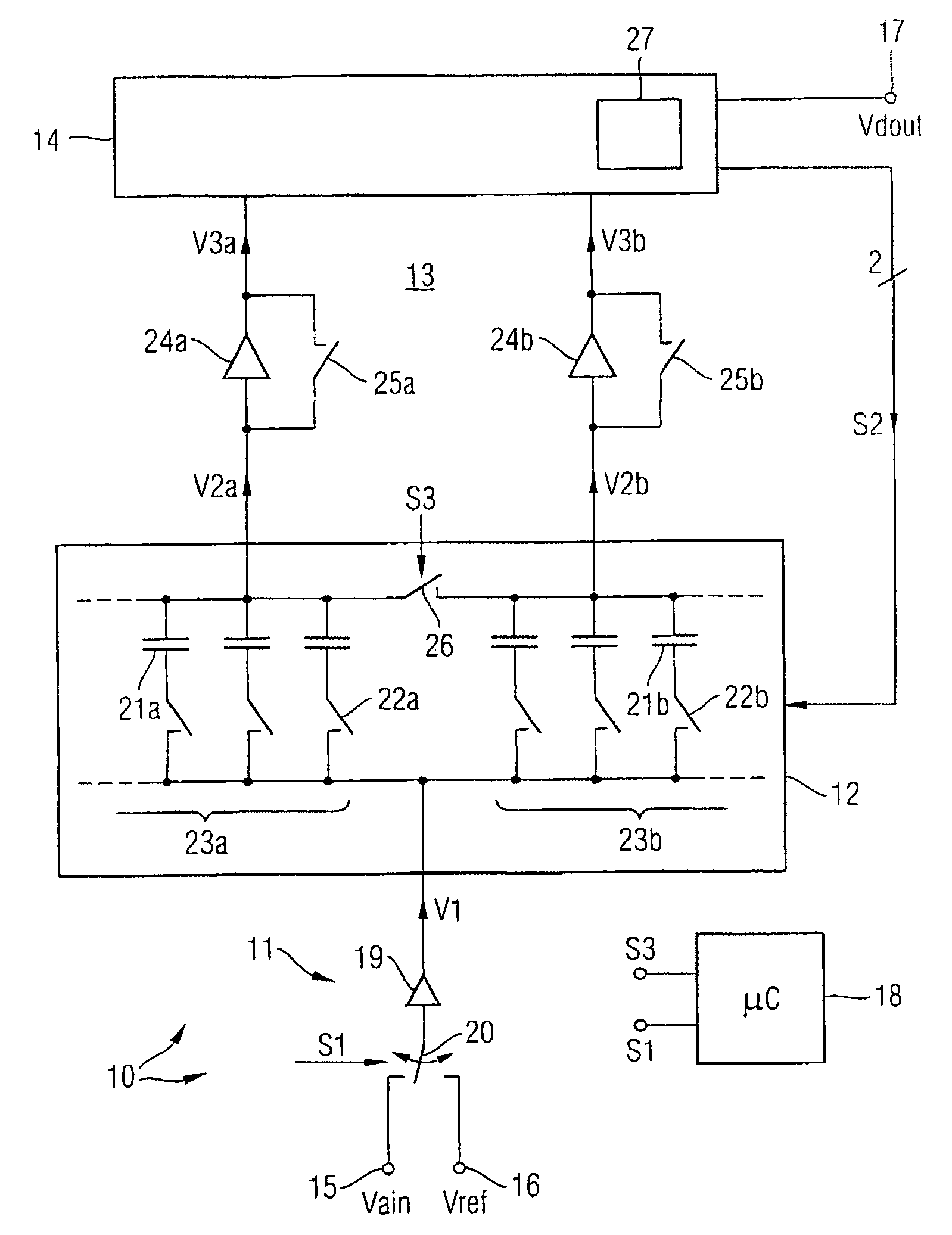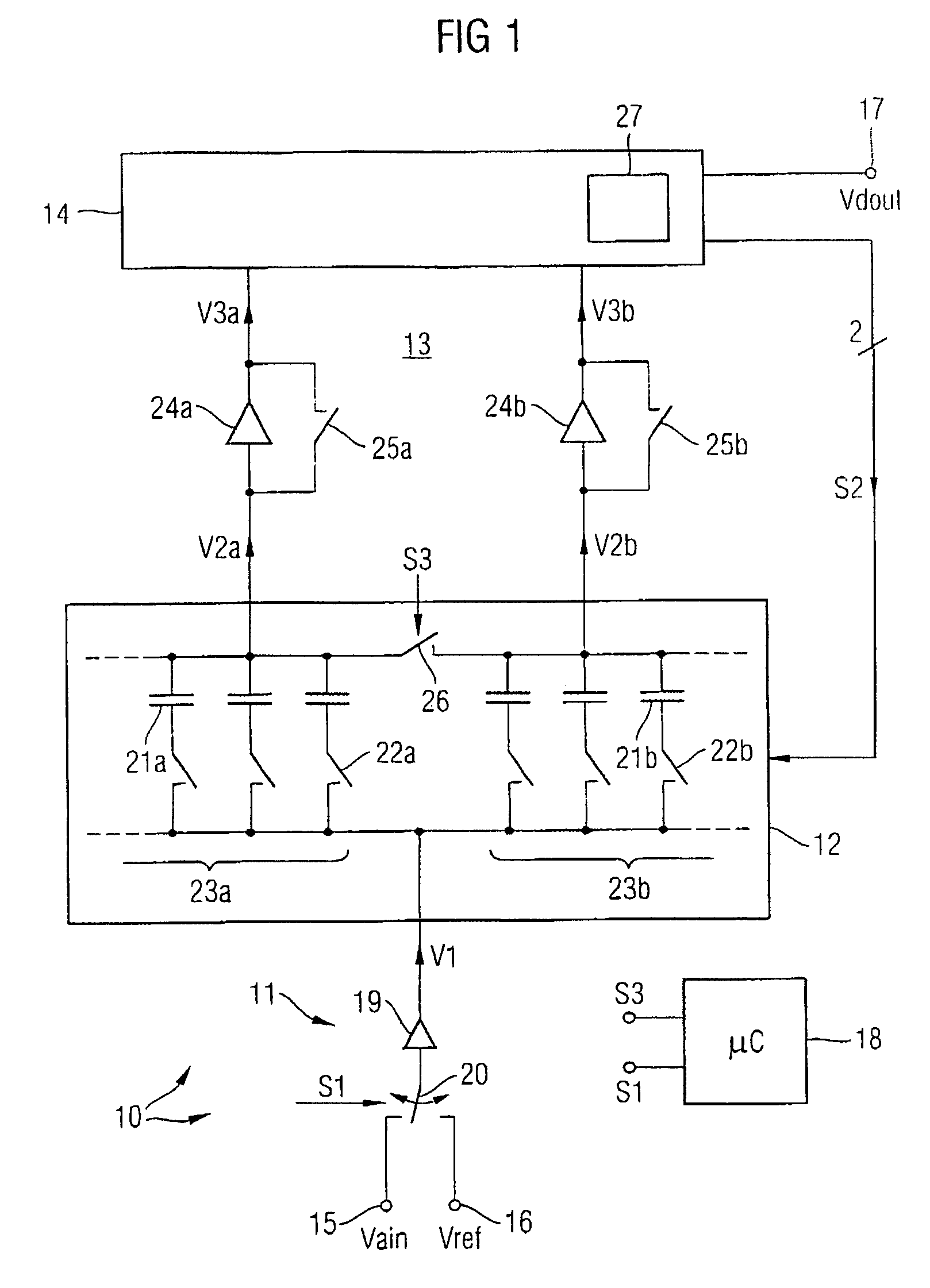Successive approximation analog/digital converter
a technology of analog/digital converter and approximation, which is applied in the field of analog/digital converter, can solve the problems of inability to arbitrarily shorten the conversion time and hence the conversion time of an analog input value into a digital output value, the need for a relatively large proportion of input drivers, and the power loss is also relatively high, so as to achieve fast analog/digital conversion, reduce power loss, and high capacity
- Summary
- Abstract
- Description
- Claims
- Application Information
AI Technical Summary
Benefits of technology
Problems solved by technology
Method used
Image
Examples
Embodiment Construction
[0033]In the figures of the drawing, elements, features and signals which are the same or have the same function have been provided with the same reference symbols—unless stated otherwise.
[0034]FIG. 1 shows a block diagram of a first general exemplary embodiment of an inventive successive approximation A / D converter.
[0035]The A / D converter in FIG. 1 is denoted by reference symbol 10. In FIG. 1, the A / D converter 10 shown therein is first of all shown in nondifferential form, but this could very easily also be shown in differential form.
[0036]The A / D converter 10 essentially has an input buffer circuit 11, a capacitive network 12, a comparator stage 13 and a logic circuit 14. These circuit parts 11-14 of the A / D converter 10 are arranged between inputs 15, 16 and an output 17. In addition, a control device 18 is provided which can be used to control the function of the A / D converter 10.
[0037]A first input 15 can have the analog input signal Vain which is to be converted into a digita...
PUM
 Login to View More
Login to View More Abstract
Description
Claims
Application Information
 Login to View More
Login to View More - R&D
- Intellectual Property
- Life Sciences
- Materials
- Tech Scout
- Unparalleled Data Quality
- Higher Quality Content
- 60% Fewer Hallucinations
Browse by: Latest US Patents, China's latest patents, Technical Efficacy Thesaurus, Application Domain, Technology Topic, Popular Technical Reports.
© 2025 PatSnap. All rights reserved.Legal|Privacy policy|Modern Slavery Act Transparency Statement|Sitemap|About US| Contact US: help@patsnap.com



